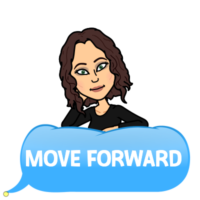
Beginning in March of 2020 and continuing into the present, education has pivoted dramatically based on the global pandemic. Distance learning and hybrid learning have proven challenging in an environment of uncertainty across the globe. News outlets report student learning loss during this time, and a widening of the academic achievement gap in regards to struggling subgroups..
Teachers are not to blame, nor are administrators, students, or parents. Never in the history of the educational system have the majority of educators worldwide have relied on technological platforms to conduct instruction. And yet, the reality remains…learning loss is a hot topic.
Yes, learning loss is a reality. I have seen it with my own children, ages 7-17, who all have gaps in understanding of state standards, particularly from content that was to be covered in the spring. This being said…I am not worried about their futures. I am saddened they have lived through a year like 2020, but I also see growth that may not have occurred without these unfortunate circumstances.
Connections > Knowledge – In today’s world, students are able to access knowledge at the touch of a button on their phone. But in 2020, what has been lost is physical connection. We have gained perspective on the importance of relationships in 2020 – many students have learned that without the power of a connection with a teacher and peers, academic growth is very difficult. This is a life lesson, teaching students how much better we are together. As human beings, we need community.
Digital Communication Proficiency – My 8 year old daughter conducts zoom calls with friends during which one person shares the screen and they watch a movie together. My 17 year old son has learned how to write a professional email, as he has been unable to visit his school counselor and employer in person. Teachers of primary age students who have returned to school in a hybrid model have informed me that they have never had students in their classroom that were this confident using technology and troubleshooting challenges. This saves instructional minutes and allows for digital collaborative and creative opportunities.
Time Management – Students have learned to keep track of days of the weeks and times during each day, to ensure they attend video calls with their teacher. Some have learned to set timers, fill calendars, create lists – manage workflow independently, unable to rely on a teacher to provide reminders in person.
While 2020 has been neither simple or expected, let us celebrate the positives. This is not to say that we ignore the reality of challenges, but that we build upon strengths that this year has brought out within us, and within our students.
